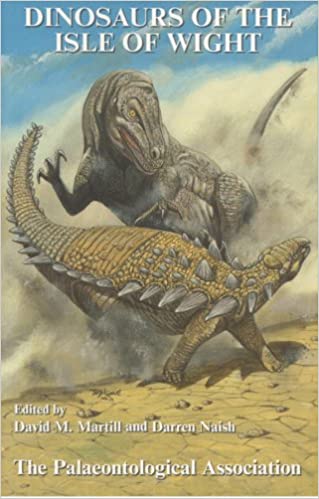Dinosaurs of the Isle of Wight
Palaeontological Association Field Guide to Fossils No 10
Edited by David M Martill and John D Hudson

Once upon a time, I would have said that the only reason to buy this sort of guide is to look at the (black and white) photos of dinosaurs and their bones, and learn about the terrestrial life of what is now the Isle of Wight.
However, this is obviously wrong. Of course it is possible for amateurs, as well as professionals, to find dinosaur bones on the beaches of the island. OK, they likely to be rolled and heavily eroded – but they are there.
Over the years (this guide was published in 2001), PalAss has created a wonderful library of guides to (usually) UK fossils, which the professional and amateur can use to identify and learn about the fossils they have found or want to find.
Dinosaurs of the Isle of Wight covers the Wealden Group of the Wessex Basin, which is well exposed in the coastal cliffs of the Isle of Wight in southern England. These cliffs are famous for the abundance, diversity and high quality of preservation of its dinosaurs.
Therefore, this comprehensive guide reviews all of the major groups of dinosaurs recorded from the island and describes all of the known species. Each species is illustrated with examples from internationally famous museum collections. In particular, the dinosaurs (and pterosaurs) and related fossils covered are:
- Ornithopod dinosaurs.
- Boneheaded and horned dinosaurs.
- Armoured dinosaurs: thyreophorans.
- Saurishcian dinosaurs 1: sauropods.
- Saurishcian dinosaurs 2: theropods.
- Dinosaur trace fossils: footprints, coprolites and gastroliths.
- Pterosaurs.
Therefore, if you want to collect dinosaurs, this guide may be for you. Or if you just want to learn about British dinosaurs from this lovely holiday destination, it is also for you.
Dinosaurs of the Isle of Wight: Guide No 10, edited by David M Martill and Darren Naish, The Palaeontological Association, London (2001), 433 pages (paperback), ISBN: 0901702722